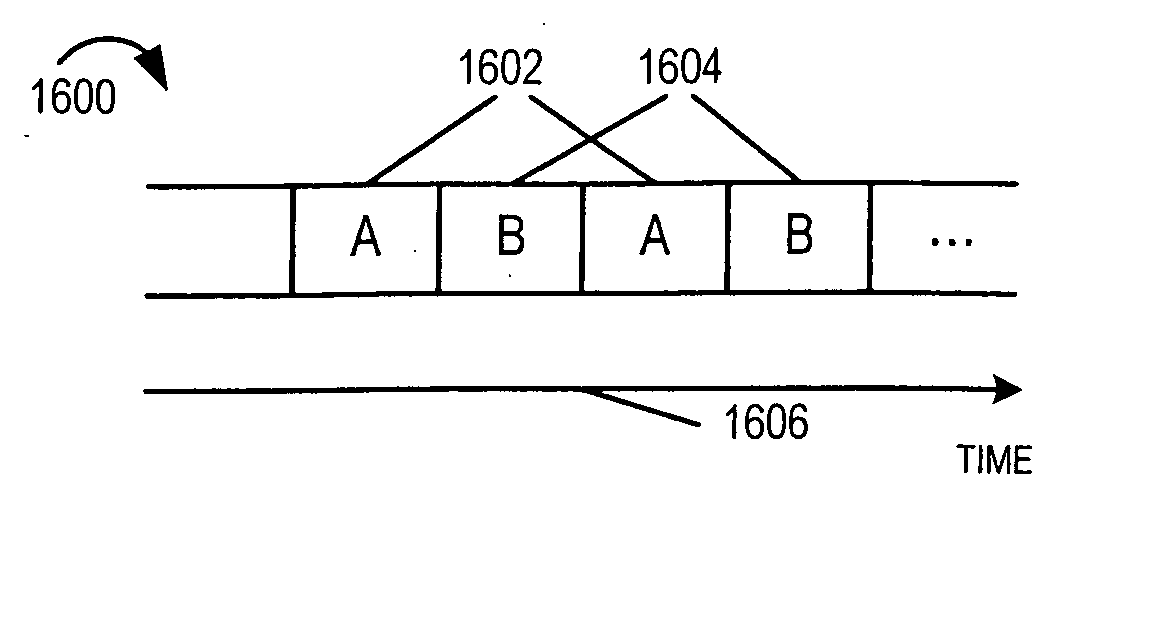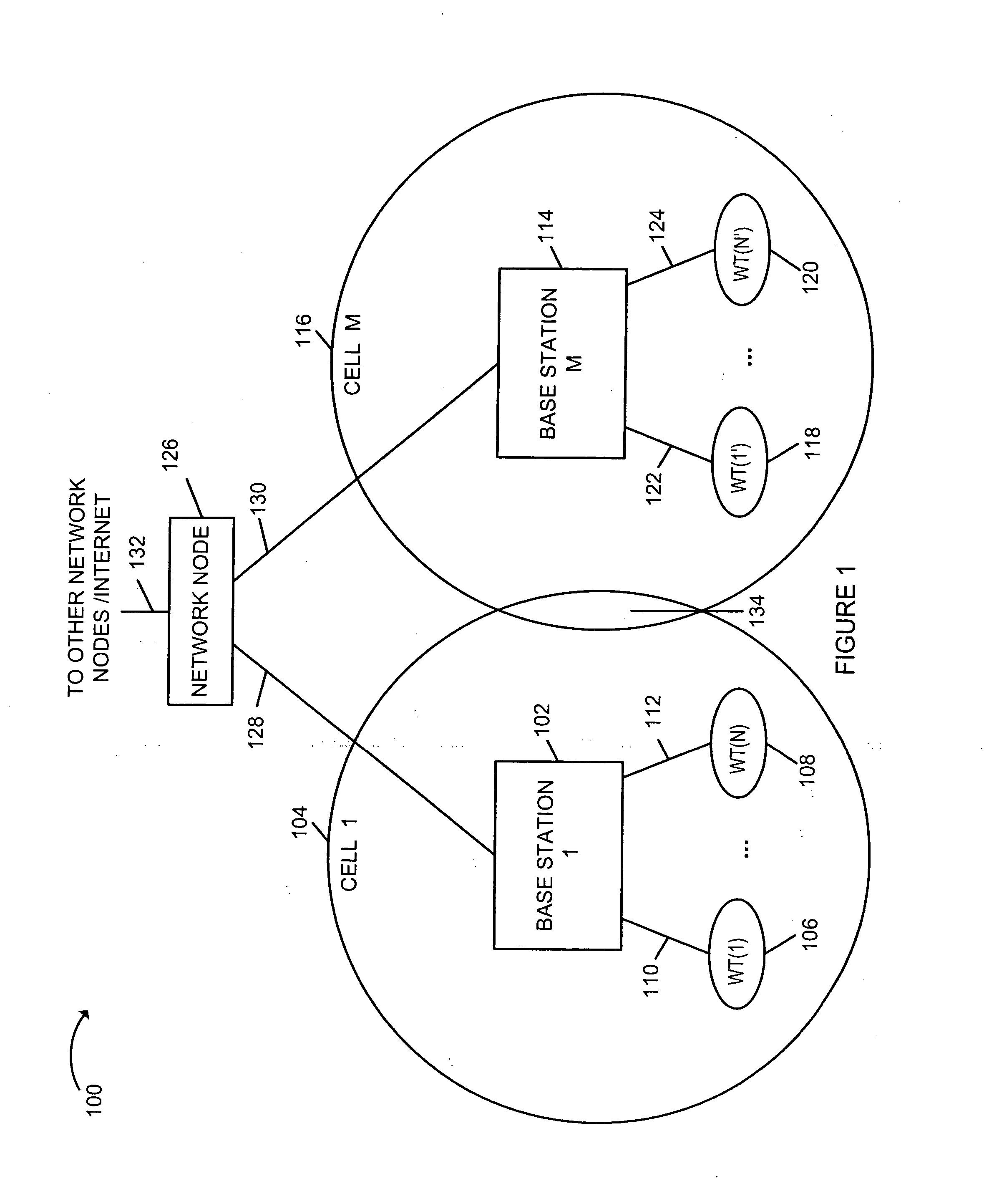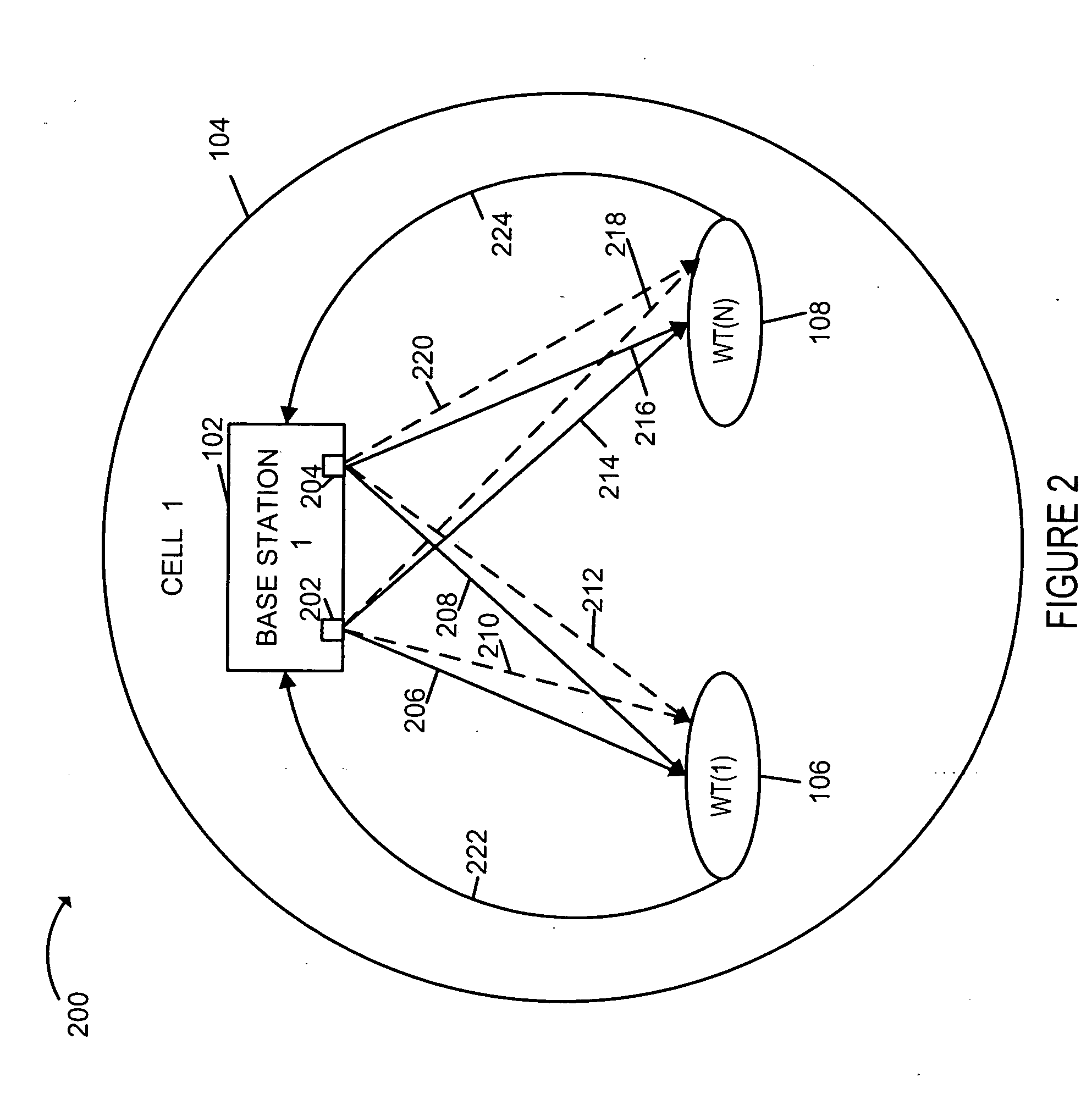Methods and apparatus of providing transmit diversity in a multiple access wireless communication system
a wireless communication system and transmit diversity technology, applied in the field of communication systems, can solve the problems of degradation or loss of communication, long delay for a mobile node situated in a location of poor channel quality, and scheduling delays involved in either of these approaches may be unacceptable for certain types of delay-sensitive delays, so as to reduce scheduling latency and reduce latency. , the effect of reducing latency
- Summary
- Abstract
- Description
- Claims
- Application Information
AI Technical Summary
Benefits of technology
Problems solved by technology
Method used
Image
Examples
Embodiment Construction
FIG. 1 is an illustration of an exemplary wireless communications system 100, implemented in accordance with the present invention. Exemplary wireless communications system 100 includes a plurality of base stations (BSs): base station 1102, base station M 114. Cell 1104 is the wireless coverage area for base station 1102. BS 1102 communicates with a plurality of wireless terminals (WTs): WT(1) 106, WT(N) 108 located within cell 1104. WT(1) 106, WT(N) 108 are coupled to BS 1102 via wireless links 110, 112, respectively. Similarly, Cell M 116 is the wireless coverage area for base station M 114. BS M 114 communicates with a plurality of wireless terminals (WTs): WT(1′) 118, WT(N′) 120 located within cell M 116. WT(1′) 118, WT(N′) 120 are coupled to BS M 114 via wireless links 122, 124, respectively. WTs (106, 108, 118, 120) may be mobile and / or stationary wireless communication devices. Mobile WTs, sometimes referred to as mobile nodes (MNs), may move throughout the system 100 and may...
PUM
 Login to View More
Login to View More Abstract
Description
Claims
Application Information
 Login to View More
Login to View More - R&D
- Intellectual Property
- Life Sciences
- Materials
- Tech Scout
- Unparalleled Data Quality
- Higher Quality Content
- 60% Fewer Hallucinations
Browse by: Latest US Patents, China's latest patents, Technical Efficacy Thesaurus, Application Domain, Technology Topic, Popular Technical Reports.
© 2025 PatSnap. All rights reserved.Legal|Privacy policy|Modern Slavery Act Transparency Statement|Sitemap|About US| Contact US: help@patsnap.com



